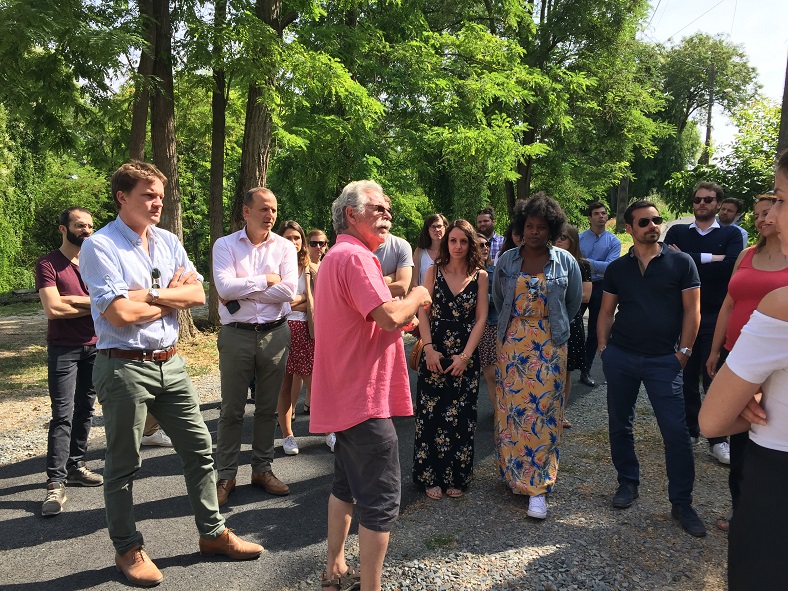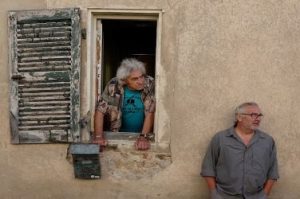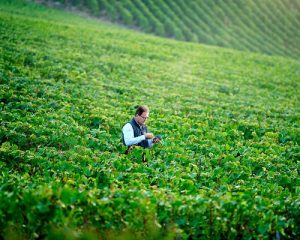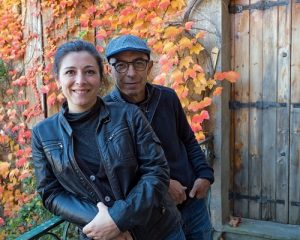
Back in July of 2019, the iDealwine team got the chance to escape to the Touraine region for a sunny day in the vineyards. There, we scheduled a visit to Jacky Blot’s domain in Montlouis. Immersed in a different world, our wine maker took us through the domain, its history, and his own stellar work.
Born vigneron?
Heading back to the summer of 2019, and a day in the Touraine, when we stepped off the coach to be warmly greeted by Jacky Blot. He couldn’t wait to tell us more about his wine domain. Unlike many of his peers in the winemaking world, Jacky didn’t come from a family in the business; they were workers in the north-west region of Brittany (not known for its fine Cabernet Sauvignon, we have to admit). Taking his first steps into the professional world, he first became an apprentice pastry chef, then a broker in the Loire, before buying 70 hectares of vine land in Montlouis. These 70 hectares contain both the Domaine de la Butte à Bourgeuil and the Domaine de la Taille aux Loups. Far from sticking to routine, Jacky has many ideas in mind, ideas with which he tends to follow through, including with help from fellow wine makers like Nicolas Joly of the famous Coulée de Serrant.
After this brief introduction to a determined and passionate man, we set off to his vineyards. The winegrower has an adage to follow: a good wine is not only made in the cellar. Jacky Blot has made great efforts to bring his plants back to life, the result of a massal selection which, unlike clones, ensures real diversity. He has therefore taken them up one by one and has introduced trellising in his vines, as goblet pruning favoured disease by limiting sunlight and concentrating humidity. He also prefers careful pruning to green harvesting. Finally, when he pulls up a hectare of vines, Jacky leaves the land fallow for ten years in order to let the vegetation take over and give the soil new life. “The plant has a memory,” he is heard saying. With such a philosophy, it is easy to understand why his vines are reputed to be among the best kept in the region.
Our vintner owns vines in two beautiful clos: Clos Michet and Clos Mosny. He owns the first one in monopoly with 12 hectares of vines. As for the second, surrounded by 1.6 km of walls, it is situated on silica and flint rich soils which allow the production of about 200 barrels, or 60,000 bottles per year. Lingering on these beautiful terroirs, he explains rather poetically that “inside the parcels, we sculpt the wines.”
Triple Zero, a pioneering wine
In the Clos de Mosny, we discover the vinification area for Triple 0, his emblematic sparkling wine, that was launched 25 years ago with the idea of producing a wine without sugar and without exogenous yeasts. If today the bottle is all the rage, the winemaker recognises that it was born a little too early, at a time when it did not yet match the taste of wine lovers who were cooking richer dishes, masking its delicacy and vivacity. Today, it is perfectly in keeping with culinary and win trends, proving his status as a visionary winemaker. This famous sparkling wine, Triple Zero, is a fine and light bubbly that can be enjoyed as both an aperitif and with a meal.
Next is a tour of the cellar dedicated to sparkling wines, with a few secrets thrown in here and there. He reminds us that the vinification process begins with meticulous work in the vineyard with manual harvesting and sorting tables at the end of the rows. Indeed, it is necessary to avoid at all costs that the damaged or even rotten grapes crush and mix their juice with the healthy berries.
The juice is then cooled and taken down to the cellar to ferment in barrels at the end of their life, i.e. ten to twelve years old. Little sulphur is then added, and a long fermentation begins, ending 6 months later. The wine is not chaptalised and is bottled when there are still 12g of sugar; this will ferment in the bottle and give that lovely sparkle. The wine is then drawn off and taken to the cellar from where it will be brought up 9 months later for the crucial disgorgement stage.
Dry white wines in Montlouis and Vouvray
Finally, we are led to the heart of Montlouis where a cellar is hidden from the sun thanks to its north-facing position and its proximity to a 30-metre high rock. This is where the winemaker stores the wine from his large parcels of land and in particular his Montlouis Rémus. Here, the grapes arrive in crates on the third floor and, after pressing and settling, the juice is lowered by gravity into Burgundy barrels (from Meursault, Ladoix-Serrigny and Rully) to ferment for 6 months. The barrels are filled to the brim: Jacky Blot avoids the presence of an exchange disk between the air and the volume of wine. Cuvée Rémus, the estate’s great classic, a very dry Chenin, goes well with your finest meals (sea bass in cream sauce, roast chicken) and Clos Michet, a plot selection, is a more ambitious, richer wine, ideal for more sophisticated cuisine. Montlouis Clos Mosny, is a parcel selection from the estate with the formidable terroir acquired at the end of 2010, and finally Vouvray Clos de la Bretonnière is an appellation located opposite Montlouis where Jacky owns magnificent parcels overlooking the Loire, a wine that is both greedy and mineral. What can be said of the superbly balanced Vouvray Clos de Venise, except that it is without doubt one of the greatest dry white wines of the Loire.
In short… a winemaker who surprises
Different vinifications, innovations: he surprises and shakes things up, but tasters quickly rally to his cause when they see the extent of his talent. Ploughing, manual harvesting, gestures which today seem obvious but which at the time seemed very innovative. We can say without hesitation that he was one of the saviours of the Montlouis appellation.
Generations of young winemakers have followed in Jacky Blot’s footsteps to produce dry and sweet Chenins of great class on these beautiful terroirs. As far as the dry wines are concerned, we must acknowledge Jacky Blot’s genius in having worked on this type of wine in a remarkable way. With fermentations in barrels and maturing in casks (now a little more restrained), he has given a new lease of life to the appellation. His dry white wines symbolise the quest for a nice fatness, while leaving the wines dry. To achieve this, there is no secret: it is necessary to have great terroirs and to carry out daily stirring of the lees for 6 months. Sparkling and sweet wines are not left out, because this alchemist transforms everything he touches into gold. Vintages of a rare precision and purity.
Thank you again Jacky for your welcome and the discovery of your work!
You can shop for wines from Domaine de la Taille aux Loups here



